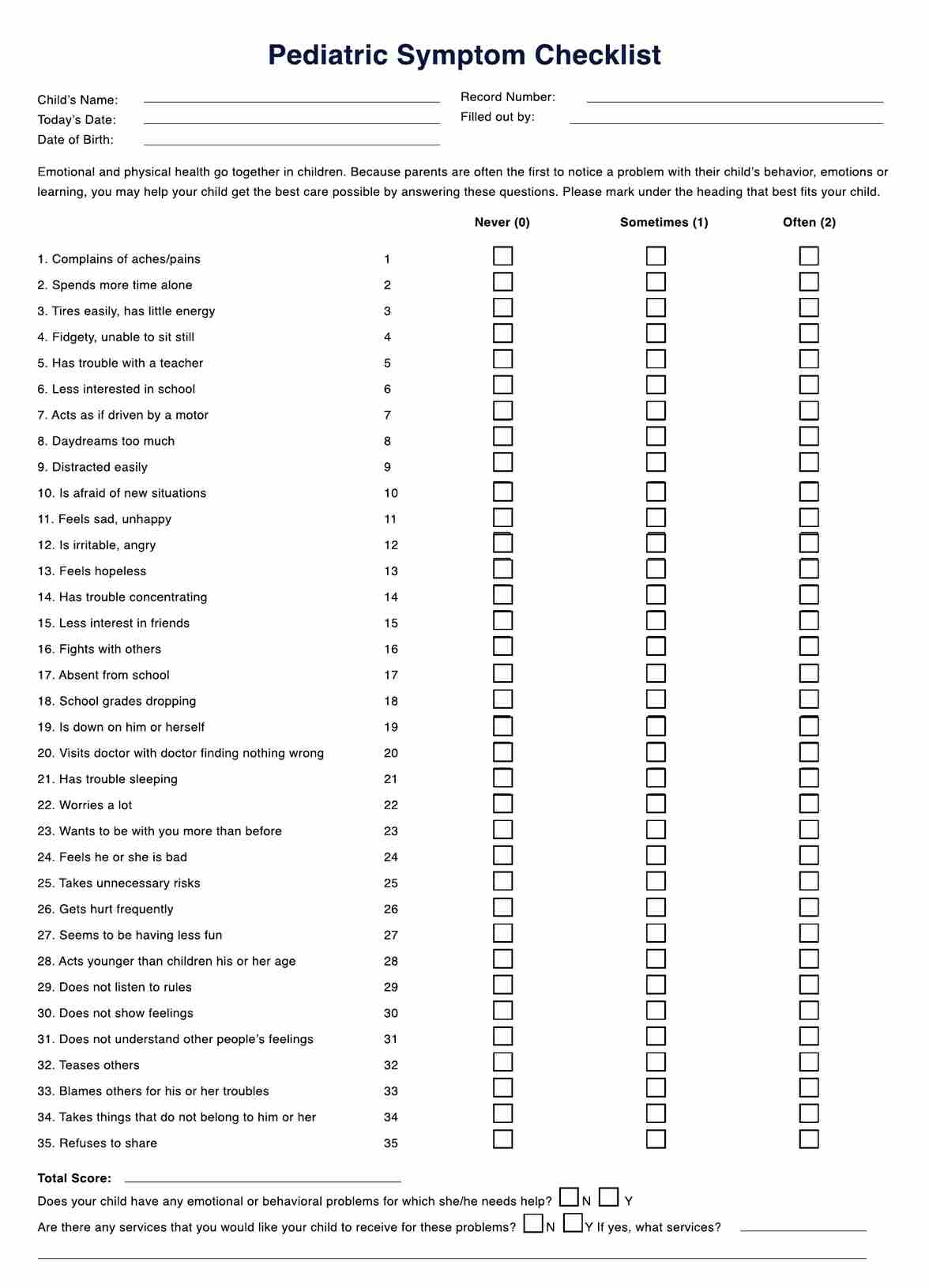Healthcare professionals, teachers, and parents use the Pediatric Symptom Checklist to screen for psychological and behavioral problems in children. It can be used for children of all ages to assess their mental health status.

Pediatric Symptom Checklist
Understand how to use the Pediatric Symptom Checklist (PSC) and get access to a free PDF template.
Pediatric Symptom Checklist Template
Commonly asked questions
The Pediatric Symptom Checklist is used to screen for psychological and behavioral problems in children. It can be used when a child's mental health needs to be evaluated, such as during regular check-ups or after periods of stress or trauma.
The Pediatric Symptom Checklist is a 35-item questionnaire that can be completed by the child, parents, or healthcare professionals. It is used to identify possible psychological and behavioral problems in children. The items cover a range of behavioral issues such as aggression, social withdrawal, anxiety, depression, and other emotional issues.
EHR and practice management software
Get started for free
*No credit card required
Free
$0/usd
Unlimited clients
Telehealth
1GB of storage
Client portal text
Automated billing and online payments











